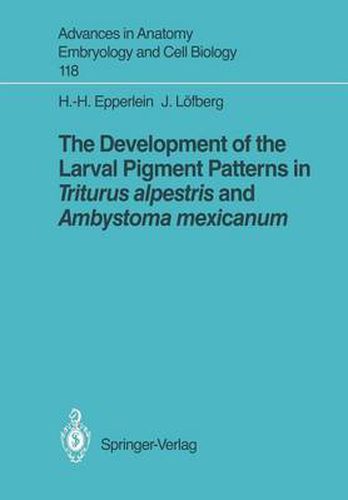Readings Newsletter
Become a Readings Member to make your shopping experience even easier.
Sign in or sign up for free!
You’re not far away from qualifying for FREE standard shipping within Australia
You’ve qualified for FREE standard shipping within Australia
The cart is loading…






This title is printed to order. This book may have been self-published. If so, we cannot guarantee the quality of the content. In the main most books will have gone through the editing process however some may not. We therefore suggest that you be aware of this before ordering this book. If in doubt check either the author or publisher’s details as we are unable to accept any returns unless they are faulty. Please contact us if you have any questions.
In the animal world, pigments and colour pigment patterns play an important role. Pigments in the epidermis offer protection against solar radiation, and the various colour patterns provide the animals with concealment, advertisement and disguise (Cott 1940). The study of pigment cells and colour patterns is a multidisciplinary research field which includes developmental biology (determination, differenti ation, migration), genetics (phenotypic gene expression, colour mutants), cell biology (ultrastructure, organelles, cell surface), biochemistry (enzymes, metabo lism), physiology (control of colour changes) and dermatology, as well as ecology and evolution. In the present study we investigate the development of two different amphibian larval pigment patterns. These patterns might serve as specific models for the arrangement of cells derived from the neural crest (NC), involving their migration, differentiation and interaction with each other and the embryonic environment. Because of the NC origin of pigment cells, we consider first some general aspects of NC development, before turning to pigment cells and specific problems in pigment pattern formation. The NC arises during neurulation, an early process in vertebrate embryoge nesis. In amphibians, the crest lies on top of the neural tube as a flat epithelial sheet or strand of cells (Detwiler 1937; Schroeder 1970; L6fberg and Ahlfors 1978; Spieth and Keller 1984). Here the term ‘crest’ is much more appropriate than in birds or mammals (Newgreen and Erickson 1986), where the crest cells start to migrate before a true crest has formed.
$9.00 standard shipping within Australia
FREE standard shipping within Australia for orders over $100.00
Express & International shipping calculated at checkout
This title is printed to order. This book may have been self-published. If so, we cannot guarantee the quality of the content. In the main most books will have gone through the editing process however some may not. We therefore suggest that you be aware of this before ordering this book. If in doubt check either the author or publisher’s details as we are unable to accept any returns unless they are faulty. Please contact us if you have any questions.
In the animal world, pigments and colour pigment patterns play an important role. Pigments in the epidermis offer protection against solar radiation, and the various colour patterns provide the animals with concealment, advertisement and disguise (Cott 1940). The study of pigment cells and colour patterns is a multidisciplinary research field which includes developmental biology (determination, differenti ation, migration), genetics (phenotypic gene expression, colour mutants), cell biology (ultrastructure, organelles, cell surface), biochemistry (enzymes, metabo lism), physiology (control of colour changes) and dermatology, as well as ecology and evolution. In the present study we investigate the development of two different amphibian larval pigment patterns. These patterns might serve as specific models for the arrangement of cells derived from the neural crest (NC), involving their migration, differentiation and interaction with each other and the embryonic environment. Because of the NC origin of pigment cells, we consider first some general aspects of NC development, before turning to pigment cells and specific problems in pigment pattern formation. The NC arises during neurulation, an early process in vertebrate embryoge nesis. In amphibians, the crest lies on top of the neural tube as a flat epithelial sheet or strand of cells (Detwiler 1937; Schroeder 1970; L6fberg and Ahlfors 1978; Spieth and Keller 1984). Here the term ‘crest’ is much more appropriate than in birds or mammals (Newgreen and Erickson 1986), where the crest cells start to migrate before a true crest has formed.